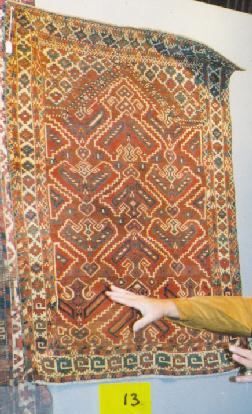
The Salon du Tapis d'Orient is a moderated discussion group in the manner of the 19th century salon devoted to oriental rugs and textiles and all aspects of their appreciation. Please include your full name and e-mail address in your posting.

This is a "throw-sized" Yomut piece with an attractive "bird-like" field design and good color, including a generous and skillful use of white. Notice that the main border at the bottom features a "curled leaf" design, more usually seen on door surrounds and on ensis of other Turkmen tribes.
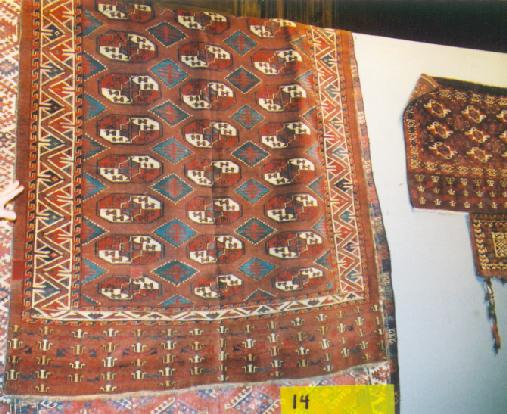
This is a smaller Yomut main carpet with very good color and a tauk naska major gul. I deliberately did not crop the bag face to the right so that you can see that the elem on this rug and that on the bag face have the same design, one that echoes "open-top palmettes" by non-Turkmen weavers. Tauk naska is often translated as "chicken" but Dennis joked that on a rug of this nobility one should probably venture something closer to "eagle." This is one of the pieces to which I found myself responding most strongly in this Rug Morning program.

This is a handsome fragment of a Yomut tent band in mixed technique. Tent bands are only now being studied closely. Marla Mallett is conducting one study and reports that the variations are wider than expected and that some patterns in tribal usage seem fairly stable. So it may soon be that tent band structures will be delineated more specifically.
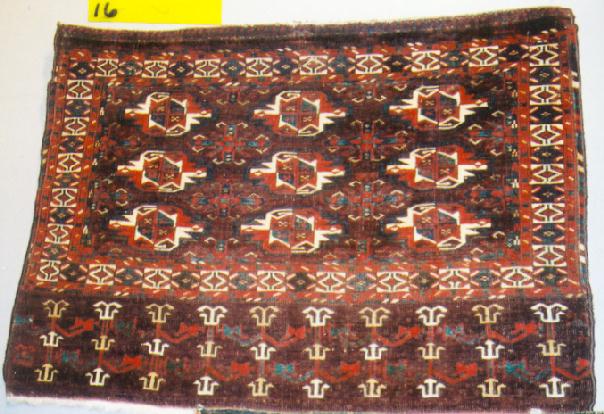
This is the Yomut chuval whose elem I compared with the small main carpet above. It has a wide range of nearly Caucasian colors, uses white well, and is drawn with crisp precision. Its general graphic composition is of a very high order for me.
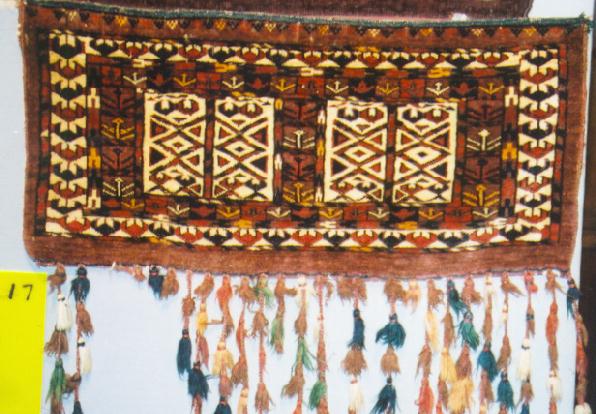
The last of the Yomut pieces Dennis brought was this nice little mafrash. Again, superior graphics and use of white. Great detail retained despite the small space this format affords.

This chuval was the first Ersari piece. Good drawing and spaciousness and a treatment of the center of the major gul reminiscent of the Saryk.
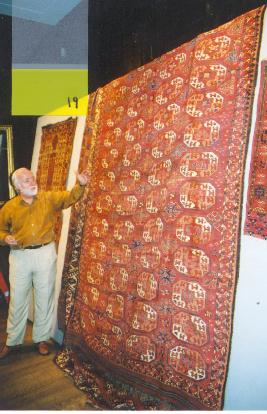
The tauk naska gul was used by several Turkmen tribes. Here we find it on an Ersari main carpet. As with much of Dennis' material, this piece was in exceptional condition.
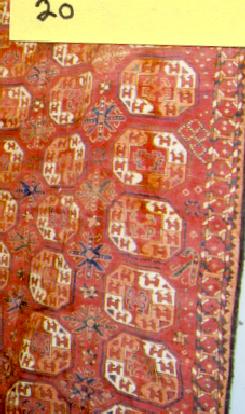
Here is a view of this same piece a little closer-up
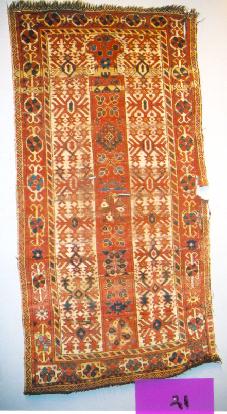
Older Ersari/Beshiri "prayer rugs" are a rare and desirable format. This one has a narrower arch-topped section than do many of those of the "head and shoulders" variety, but features two wide, very unusual and dramatic white ground bands on each side. Some renditions of the main border in this piece do not follow the more conventional drawing of the bottom section in which the central circular element is framed with a rectangle. Instead, some of the elements of the side and top borders seem to be housed in more oval cartouches.
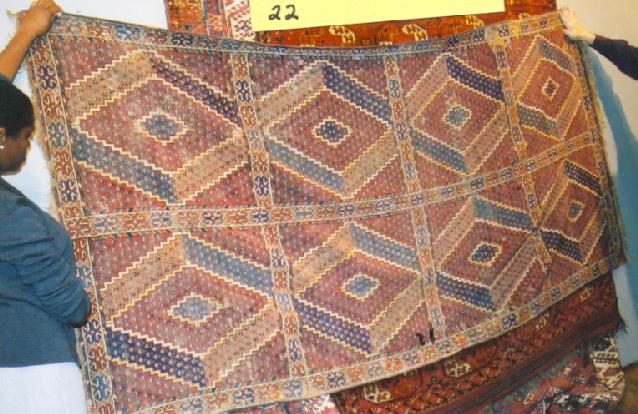
This piece is a familiar Ersari compartmented carpet design, with both the larger diamonds and the compartments and borders composed of smaller repeated devices. Although the coloring of the pieces seems more subdued, when seen close-up the range of colors in it is considerable.